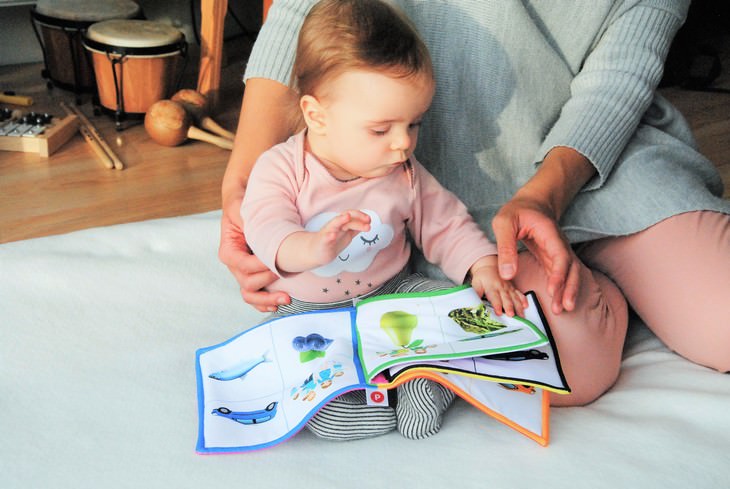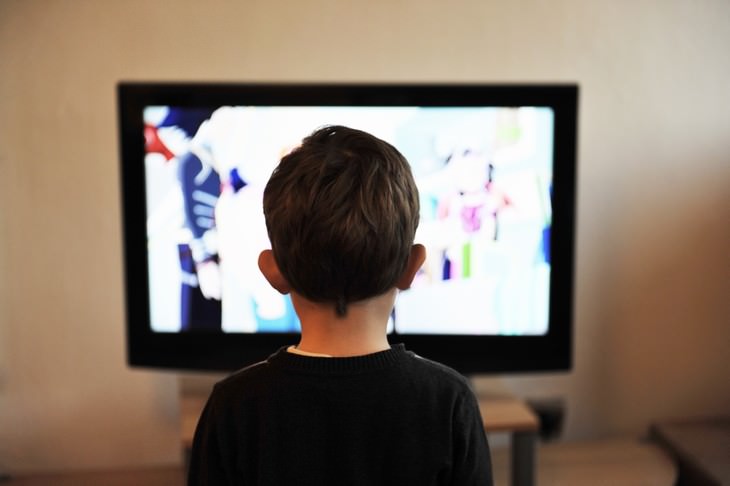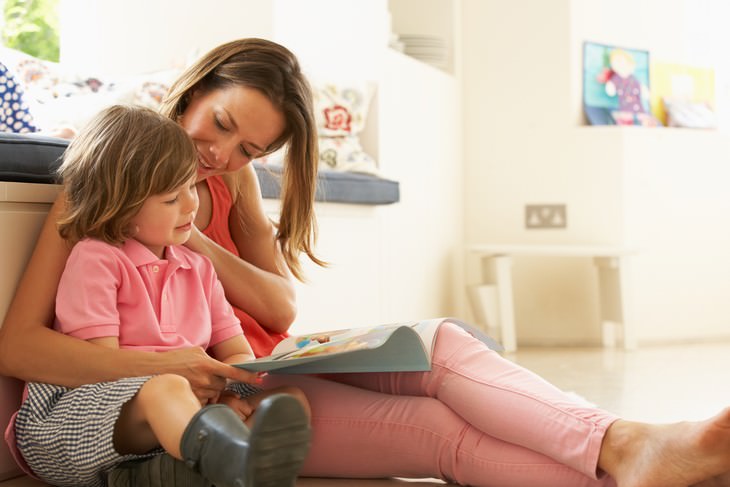1. Introduce Your Child To Both languages As Early As Possible
Children are ready to learn a language immediately after birth, as they have all the necessary brain structures and organs to do so. The very basic element of any language is a sound, and that’s exactly what your child will learn first.
By the way, the fact that kids don’t usually start producing voluntary sounds until 6-7 months doesn’t mean that they aren’t learning: they are listening attentively to all the sounds and syllables you say. And because the two languages you want them to learn may have very different sounds, you want to expose the child to both languages as soon as possible.
For example, the English and the Spanish “r” is pronounced differently, as Spanish has the so-called rolling “r”, which the child will never be able to learn unless they hear and try to reproduce it themselves several times. So, it’s a good idea to expose your child to both languages since their birth.
Don’t get discouraged, however, if your child didn’t start learning a second language so early, as linguists guarantee that, with constant practice, any child can learn to speak a language on a native level.
2. Expose Your Child To Both Languages Every Day
A truly bilingual person is one that knows both languages equally well, and because constant practice is the only reason why we learn a language to begin with, you will have to make sure the child uses both languages on a daily basis.
And remember, language learning encompasses 4 main skills:
- listening
- speaking
- reading
- writing
A native level cannot be reached unless you, the parent (grandparent, caregiver, etc.) will teach them all of these skills, persistently and consistently. This is especially true regarding the minority language, as children who didn’t learn a language at school often cannot read and write in the minority language, even if they understand and speak it perfectly.
3. Don’t Worry If Your Child Mixes the 2 Languages When Speaking To You
A common concern among parents of bilingual children is that the child will mix the languages, which surely must mean that they don’t know both languages well enough. This is a myth, and one that we would like to debunk immediately.
Even if your child mixes the 2 languages when speaking to you, this is because they know that you can understand them, and that’s why they do it. This phenomenon is called code-switching in linguistics, and people tend to switch from one language to another either because it is customary in your family, or because it’s a very specific and narrow field (let’s say, a specific fairy tale that the child knows only in the minority language).
It is very rare and usually happens only with very young children that a child will talk to a stranger in the minority language. So, don’t be afraid that your child will refer to water as wasser (German), or voda (Russian), or agua (Spanish), or mizu (Japanese) at school, as they know very well which language to use in which context.
4. Correct Them If They Say Something Incorrectly (Or In the “Wrong language”), But Don’t Stop Them Very Often
Correcting and giving feedback in general is a very good thing to do, but don’t correct too often, as it may interrupt the flow of the conversation and will likely make both you and the child frustrated.
Also, a good idea is not to interrupt someone mid-sentence. Wait until the child is finished with their thought, and then kindly and patiently tell them what they said wrong. This will not only encourage the flow of conversation, but will also enable the child to ask follow-up questions.
5. Don’t Rely On TV Or Media Alone To Teach Your Child
Remember those 4 basic language skills we mentioned in the second tip? Well, these can be categorized into active and passive skills. Passive skills include those that are linked to perception, namely listening and reading, whereas the active skills require producing language and include speaking and writing.
Now, when you rely on TV, books and devices for language-learning, you are actually training only the passive skills, so your child will likely end up being able to understand the language very well, but will have difficulties expressing themselves in that language.
This doesn’t mean that you shouldn’t incorporate these wonderfully useful media resources to teach your child a language at all, simply make sure to balance them out with meaningful conversations, games, written assignments and interactive activities.
A great tip on enriching your child's exposure to the minority language even more is finding a community of native speakers in your area, as the pronunciation, pace and vocabulary changes from person to person, and you want to show as much variety in speech, as possible to you child.
6. Read, Sing and Talk To Your Kids Every Day, Especially In the Minority Language
This tip is linked to the previous one, as the point in these activities is to encourage the child’s diverse use of language.
Leading experts in the field of bilingual development advise to tell stories, read aloud, sing, and speak to children, especially in the minority language, so that the kids get the richest and most complex language exposure possible.
This will ensure that the child will be familiar with conversational language, cultural and traditional information (such as fairy tales, history, etc.), as well as more sophisticated language (from literature, journals, etc.).
Without that, the child risks not being truly bilingual, as their use of the minority language will be limited to small talk. By the way, you want to focus on the minority language more often because the child is usually taught the majority language at school and has greater access to it than the minority language.
7. Choose Your Strategy
The meat and potatoes of bilingual development is a specific learning strategy, and you will have to decide early how you want to maintain a balance between the two languages. Here are the 3 most well-known teaching strategies:
Strategy 1: One parent, One Language
It is exactly what it sounds like: each parent talks to the child in a different language a requires the child to do the same. This approach fits families where the parents are native speakers of different languages the most. In that case, each parent speaks to the child in their own language.
The advantages of this strategy:
- Enables the parents to teach 3 languages, if each parent speaks a language different from the majority language.
- Doesn’t require the parents to speak 2 or more languages fluently.
The advantages of this strategy:
- Can tilt the balance towards the majority language in a situation where 1 of the parents talks to the child in the majority language. With time, a child will feel that the majority language is more useful and important, and can refuse to speak in the minority language.
- It can be problematic when the family is together, especially if one of the parents doesn't speak both languages.
- Isn’t available to lone parents.

Strategy 2: Home Language
According to this strategy, both parents speak the minority language at home with their child. This is a great strategy if you and your partner are both native speakers of a language other than the majority language.
The Benefits:
- Parents don’t have to be native speakers of the minority language.
- The child will use the minority language at home all the time and it won’t be pushed out by the majority language.
- It is suitable to lone parents.
- It doesn’t require the parents to know the majority language.
The Drawbacks:
- The child may, in time, feel like the home language is worse than the majority language. To prevent that from happening, educate your child about the importance of the language and the benefits it has.
Strategy 3: A Specific Language In a Context
Under this strategy, you attribute certain activities and situations to a specific language. For example, at dinner you speak one language, but when doing homework you use the other language.
The Benefits:
- It can be combined with a different strategy. So, you want to encourage your child to speak the majority language at school, so you talk about school and do homework in that language, although normally you speak the minority language at home.
- It can be used by lone parents.

The Drawbacks:
- It can get confusing.
- Your child may end up being able to discuss a specific topic only in 1 language.
- It requires the parent(s) to speak both languages fluently.
As you can see, each approach has its own benefits and drawbacks, and depending on your situation, you can mix and match between these strategies. Also, don’t be afraid to switch the strategy if you see it’s not working.
8. You Don’t Have To Be a Native Speaker To Raise Bilingual Kids
Though it is certainly beneficial if your proficiency of the language is native or near-native, it’s not impossible to teach your child a language you don’t know perfectly. It will take more work and effort for you as a parent compared to native speakers, as you will have to constantly learn and improve together with your bilingual child, but the results are very well worth it.
An excellent example of this is Heather, who shares her journey and several great tips on raising her kids as speakers of both English and Spanish. You can definitely learn and be inspired by her journey in this bonus video.
H/T: nytimes, bilingualkidsspot, raisingchildren, linguisticssociety







